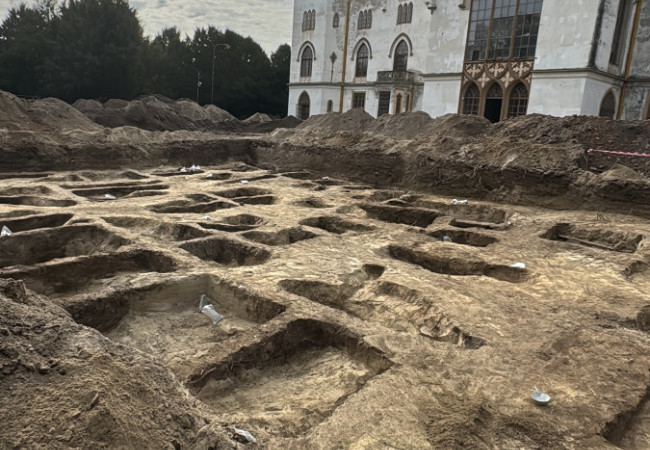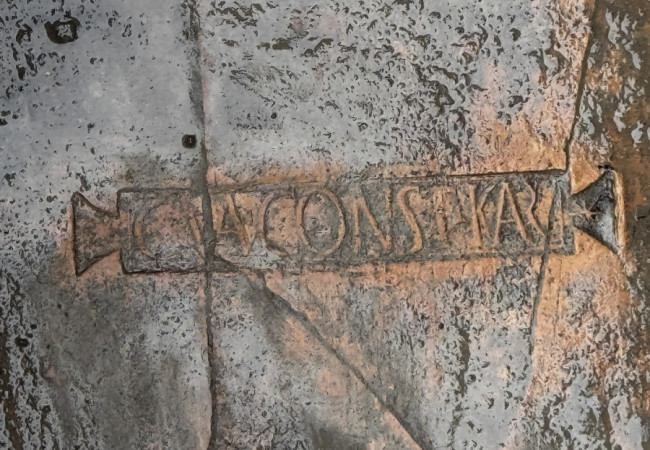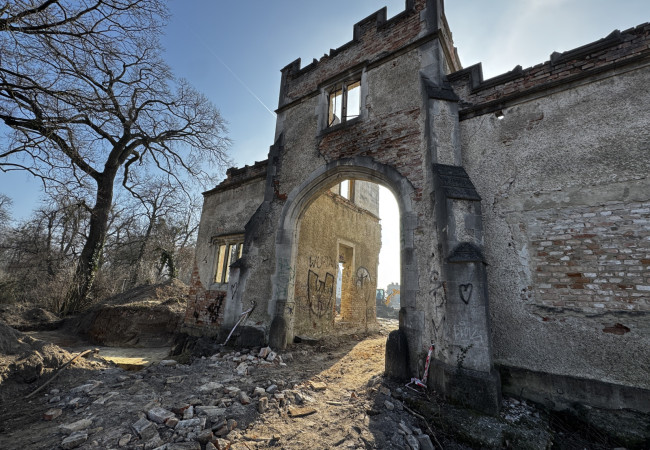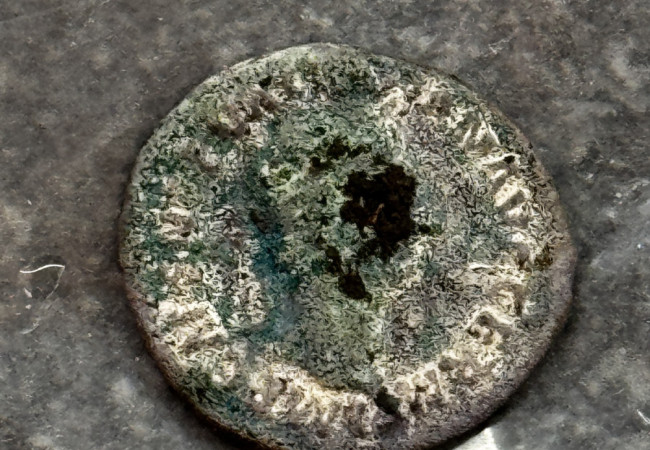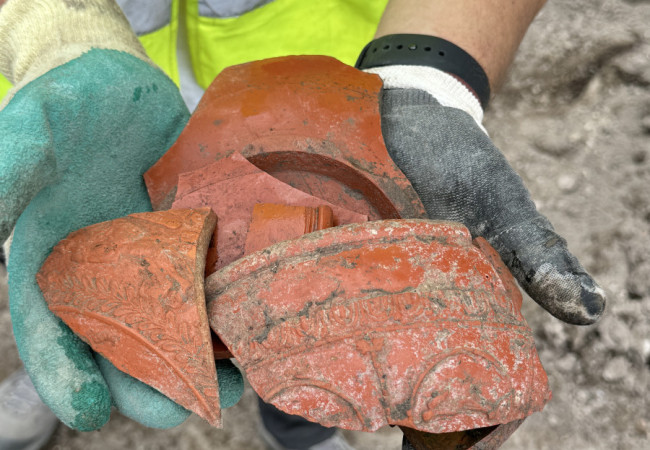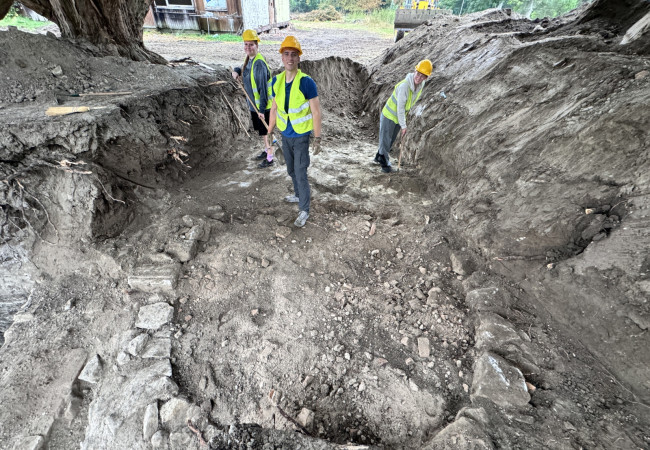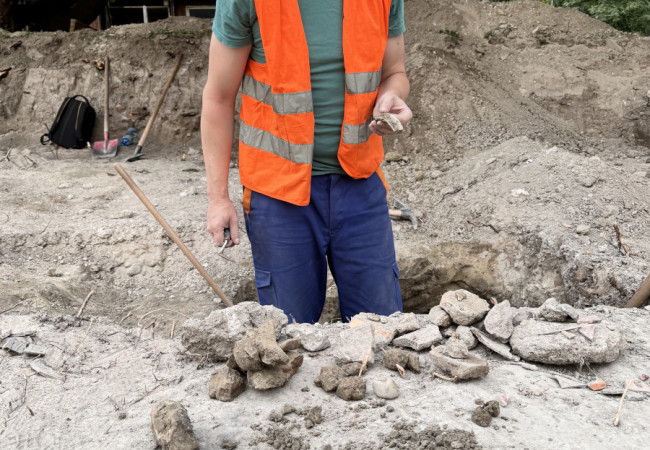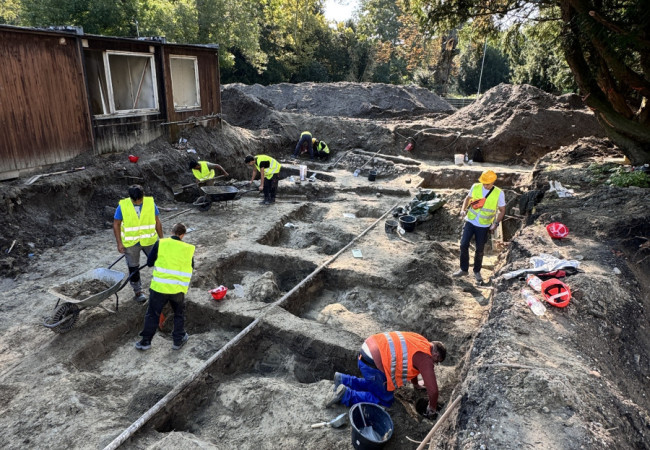Archaeologists from Trnava University have discovered the first Roman aqueduct in Slovakia. It is set to be inscribed on the UNESCO World Heritage List

The results of a rescue archaeological excavation, conducted during the renovation of the Rusovce Manor House – a National Cultural Monument, have brought surprising insights into Roman and Early Modern construction activities in the vicinity of the neo-Gothic building located in the Rusovce district of Bratislava. The excavation is being carried out by the Department of Classical Archaeology at the Faculty of Arts, Trnava University, under the leadership of Associate Professor Erik Hrnčiarik.
Among the most unexpected discoveries were a medieval brick kiln and, most notably, a Roman aqueduct – a truly rare and extraordinary find.
“Perhaps the most astonishing discovery is the ancient aqueduct, which, in terms of its state of preservation, has no known parallel in Slovakia. It is essentially the first thoroughly explored Roman aqueduct in the country. This is an artificial water channel constructed to transport water from one location to another – a type of structure we previously knew only from other parts of the Roman Empire. To date, we’ve been able to excavate a length of up to 38 meters,” explains archaeologist and Dean of the Faculty of Arts, Erik Hrnčiarik.
The aqueduct was found approximately 80 cm beneath the current ground level. Its walls are built of stone, while the base consists of Roman bricks known as tegulae. These bricks are laid lengthwise in a continuous row, creating a gentle downward slope in the direction of today’s manor. The aqueduct stands 91 cm high, and water flowed through a 32 cm wide channel, roughly equivalent to one Roman foot.
Archaeologists were impressed not only by the aqueduct’s state of preservation but also by the sheer volume of materials used in its construction – estimated at 51 tons of stone.
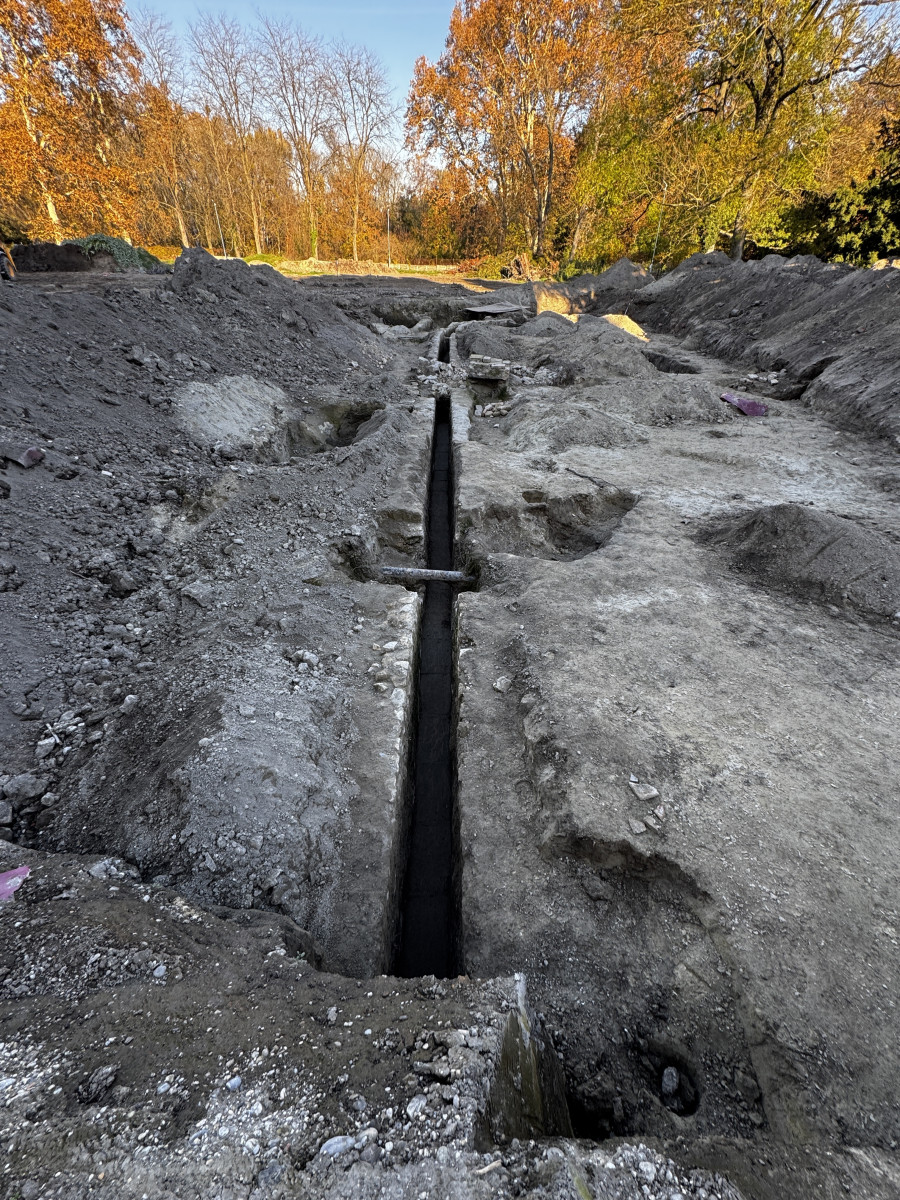
A Roman Aqueduct Hidden for Millennia: 51 Tons of Stone and Traces of a Dog
“We calculated that the Romans used up to 51 tons of stone and more than 80 tegulae (roof tiles) to build the aqueduct. Some of the tiles still bear the name of their maker, and a few even have paw prints of a dog that must have walked over them while they were drying in the sun,” adds Tomáš Kolon, deputy head of the excavation.
One particularly important find is a stamped tile bearing the mark C VAL CONST KAR. This refers to a private brickyard owned by Gaius Valerius Constans from Carnuntum, active during the 2nd century AD. According to Erik Hrnčiarik, the aqueduct was likely in use until the end of the 2nd century, when it was intentionally backfilled and preserved—a decision that allowed it to survive for nearly two millennia.
Similar aqueducts have been excavated in nearby Vindobona (present-day Vienna) and Mautern (ancient Favianis). However, the one discovered in Rusovce is the longest of its kind. The function of the structure it once supplied with water remains unknown. Based on the course of the aqueduct, archaeologists believe it led to a now-lost building located beneath the current southern wing of the manor, possibly serving as baths for Roman soldiers—a facility akin to a modern-day spa. Unfortunately, since no remains of this structure survived (it was destroyed during the construction of the manor), this interpretation remains hypothetical.
The Roman aqueduct was discovered within a protected heritage zone, near UNESCO World Heritage-listed sites. After consulting with the Monument Board of the Slovak Republic, the Office of the Government of the Slovak Republic, which oversees the reconstruction, made the decision to preserve the aqueduct in situ. As a result, a planned utility building was relocated further north, allowing Slovakia to symbolically gain one more monument aligned with UNESCO’s values.
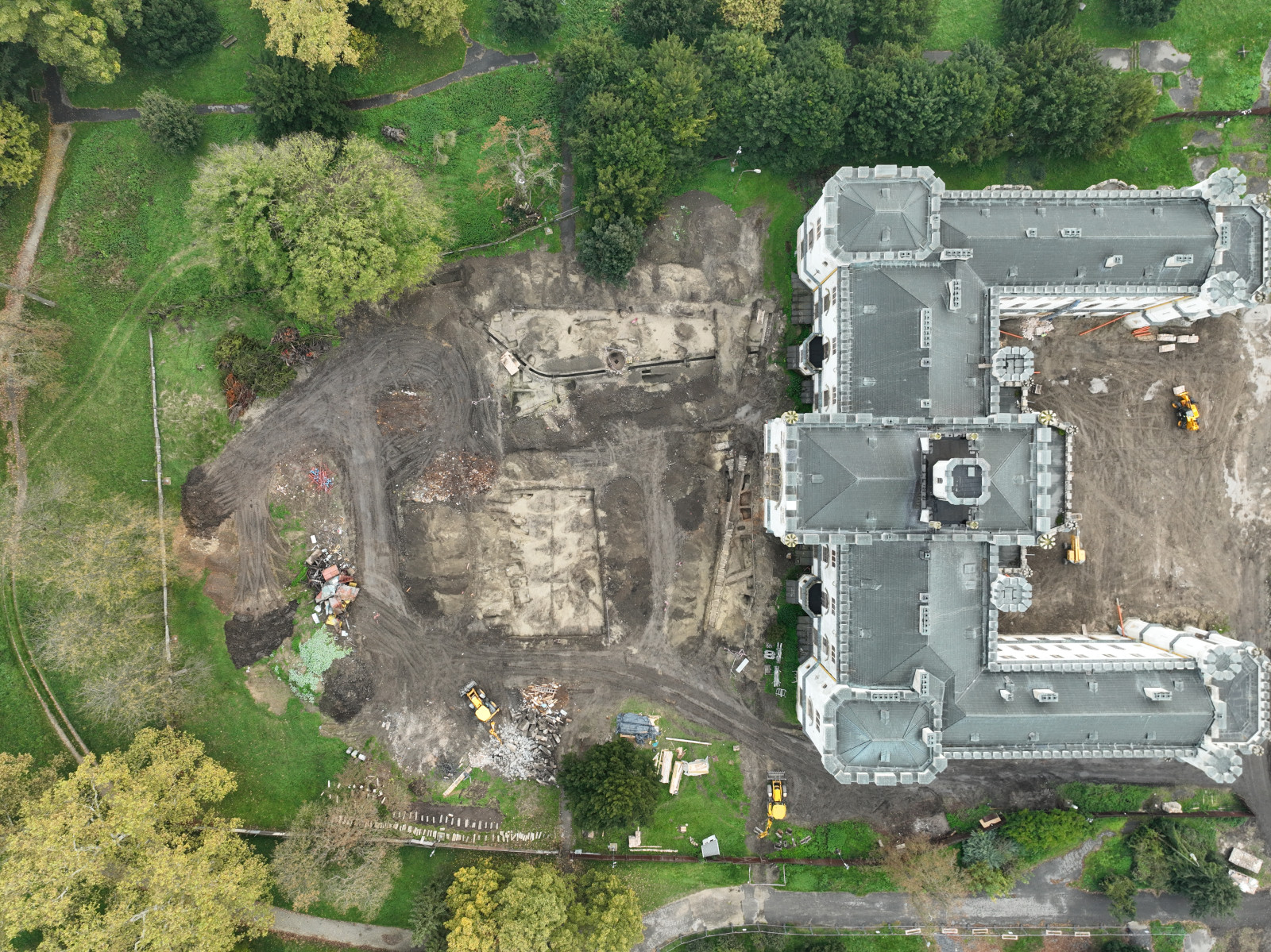
A Roman-Era Settlement Uncovered
In addition to the aqueduct, the rescue excavation also revealed several settlement features from the Early Iron Age and the Middle Ages. However, the largest number of finds comes from the Roman period.
Most of these are fragments of Roman pottery, with a significant presence of Terra sigillata – a type of fine, glossy red luxury ceramic that was imported to Rusovce from what is now France and Germany.
Among the rarest discoveries were:
- Windowpane glass, once used to fill window frames,
- Fragments of a reflective bow’s decorative inlay,
- A silver bracelet,
- And even a remarkably well-preserved Roman-era wallet.
These findings further confirm that the area surrounding today’s Rusovce Manor was not only an active Roman settlement, but also one that enjoyed access to trade, imported luxury goods, and a strategic cultural position within the Roman Empire.
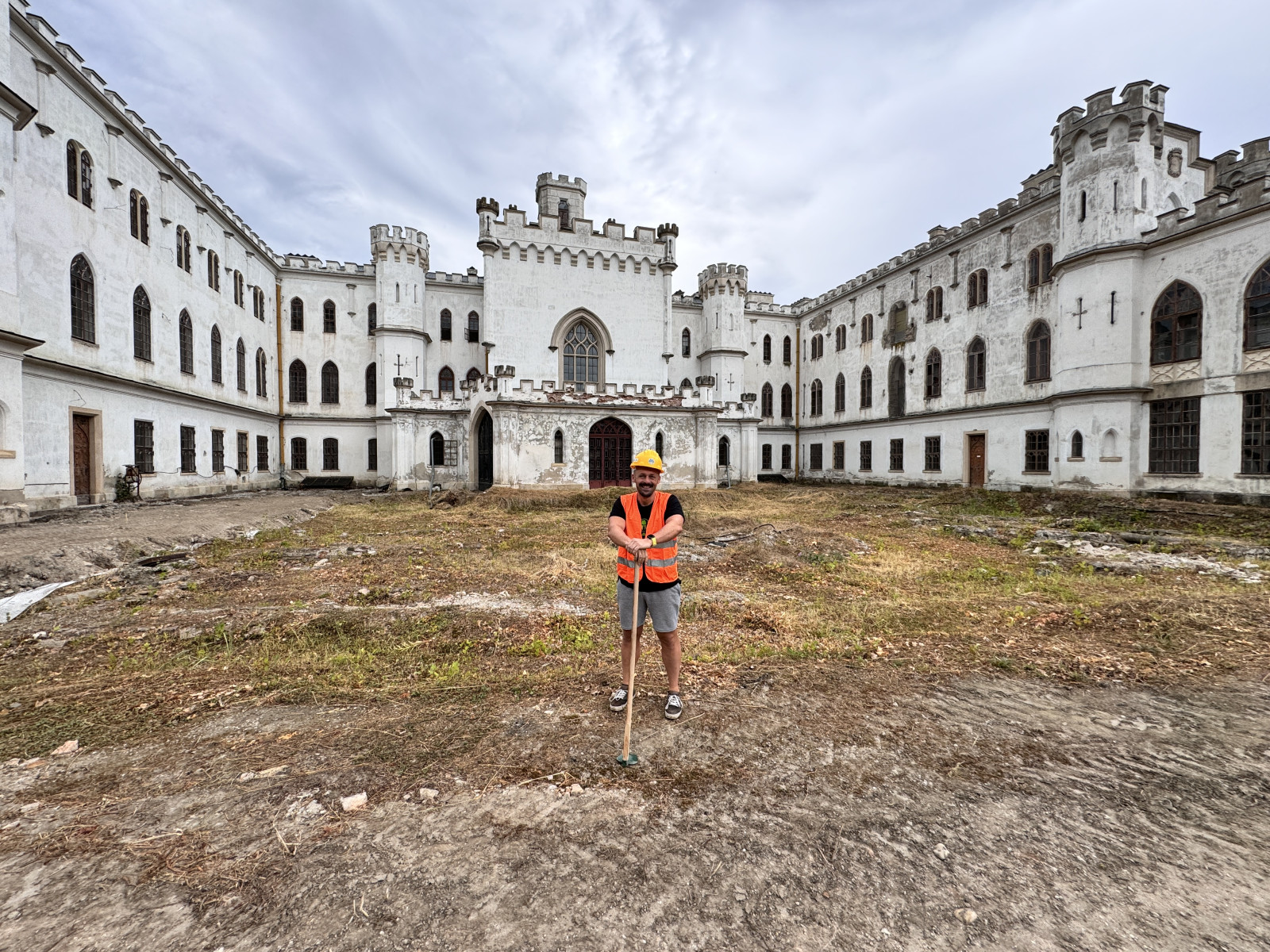
A Late Medieval Brick Kiln and a Modern-Era Icehouse
Archaeologists from Trnava University have identified a rare find in Slovakia – a medieval kiln used for brick production, which was later repurposed for lime burning.
“We assume that lime was produced in this kiln by burning marble statues, reliefs, or other artefacts discovered by locals in the nearby ruins of a Roman military camp,” explains Tomáš Kolon.
Another intriguing discovery was a large underground circular structure, several meters in diameter, identified as an icehouse. Such structures were used in winter to store ice, which was then used during summer to preserve food and chill beverages.
“The icehouse dates to the modern era and most likely served the Zichy family, who owned the manor,” adds Erik Hrnčiarik.
Currently, the archaeological team continues its research in the vicinity of the former servant quarters (čeľadník), located within the expansive Rusovce Park. Once this phase concludes, archaeologists will return to the manor grounds in spring to continue the rescue excavation.
